
Frequently Asked Questions
about air pollution, ozone, and how the RAQC supports local efforts to curb air pollution.
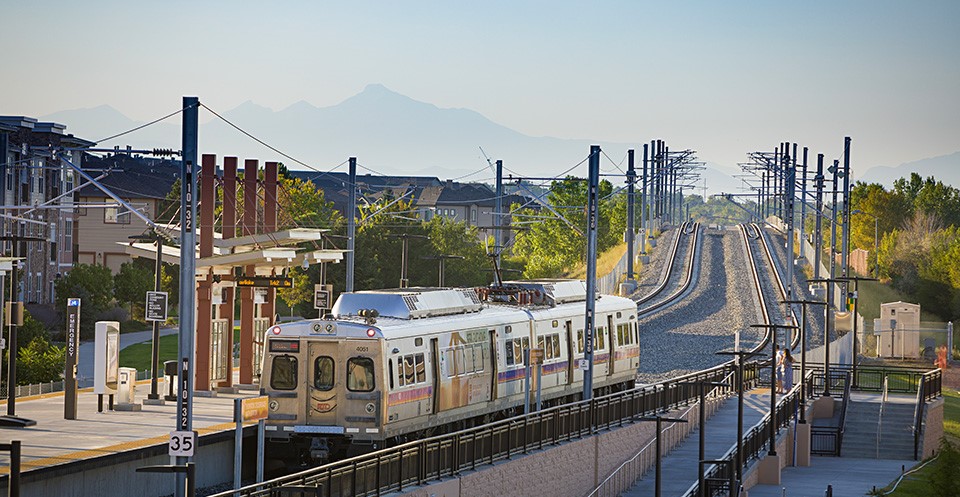
FAQ #1: What air pollutants are we combatting?
Ground-Level Ozone: the area's greatest air quality concern.
What is it?
Ground-level ozone is formed when Volatile Organic Compounds (VOCs) and Nitrogen Oxides (NOx) combine and “cook” in the heat and sunlight. The highest ozone levels are usually recorded in summer months on hot, stagnant days with little wind.
Why is it bad?
Unlike the good, protective ozone layer in the stratosphere, ground-level ozone is a harmful air pollutant that affects all of us – particularly the young and elderly. Those who are active and exercising outdoors may experience breathing difficulties. Prolonged exposure may result in reduced resistance to lung infections and colds. Ozone can also trigger attacks and symptoms in individuals with pre-existing conditions such as asthma, or other respiratory diseases like chronic bronchitis and Chronic Obstructive Pulmonary Disease (COPD).
Pollutant Status:
The nine-county Denver Metro/North Front Range Area is out of compliance with federal air quality standards for ozone. RAQC-sponsored projects such as Engines Off, Mow Down Pollution and the Simple Steps. Better Air campaign aim to reduce ozone-causing emissions.
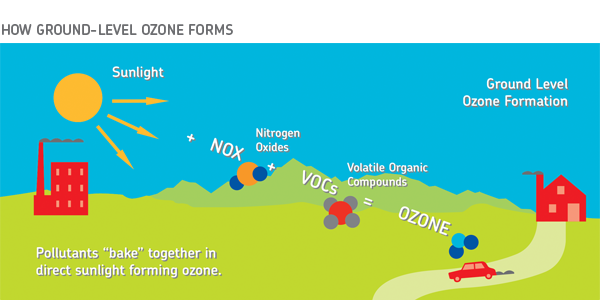
Carbon Monoxide
What is it?
Carbon Monoxide is a colorless, odorless gas that is formed from the incomplete burning of fuel (combustion). It is emitted directly into the air from vehicle exhaust pipes and typically occurs when vehicles are first started up or when they are not properly started.
Why is it bad?
Carbon Monoxide reduces oxygen delivery to the body’s organs and tissues.
Pollutant status:
While the region is not in violation of CO standards, the RAQC has several programs in place to help reduce vehicle emissions and keep this pollutant in check.
Particulate Matter
What is it?
Particulate matter (PM) consists of airborne particles that can be inhaled by humans. PM comes in sizes ranging from 2.5 to 10 micrometers in diameter.
Why is it bad?
Environmental Protection Agency (EPA) studies suggest that PM is harmful to human health because small particles less than 10 micrometers in diameter are too small to be filtered by the nose and lungs and can get deep into the lungs and into the bloodstream. Particle pollution exposure has been linked to serious health problems involving the lungs and heart.
PM 2.5
PM 2.5 is fine particulate matter measuring only 2.5 micrometers. It is so small that it can be detected only with an electron microscope. PM 2.5 is created from combustion processes, including those from motor vehicles, power generation, residential wood burning, forest fires, agricultural processes and some industrial processes.
The Denver metro region is currently in compliance with PM 2.5 standards.
PM 10
PM 10 is coarse particulate matter measuring between 2.5 micrometers and 10 micrometers. PM 10 is created from windblown dust, unpaved roads, street sand, and crushing and grinding operations.
The Denver metro region has been in compliance with PM 10 standards since 1993. RAQC-sponsored projects such as wood-burning fireplace/stove change out and street sweeping programs have helped the region to lessen PM 10 and, therefore, reduce the amount of particles contributing to the “Brown Cloud” in the winter.
FAQ #2: What causes ozone pollution?
Ozone is formed from volatile organic compounds (VOCs) and nitrogen oxides (NOx). Although the majority of ozone is natural, much of it comes from anthropogenic sources. Below are some of the greatest sources of local ozone pollution in the RAQC region (the source categories are defined below).
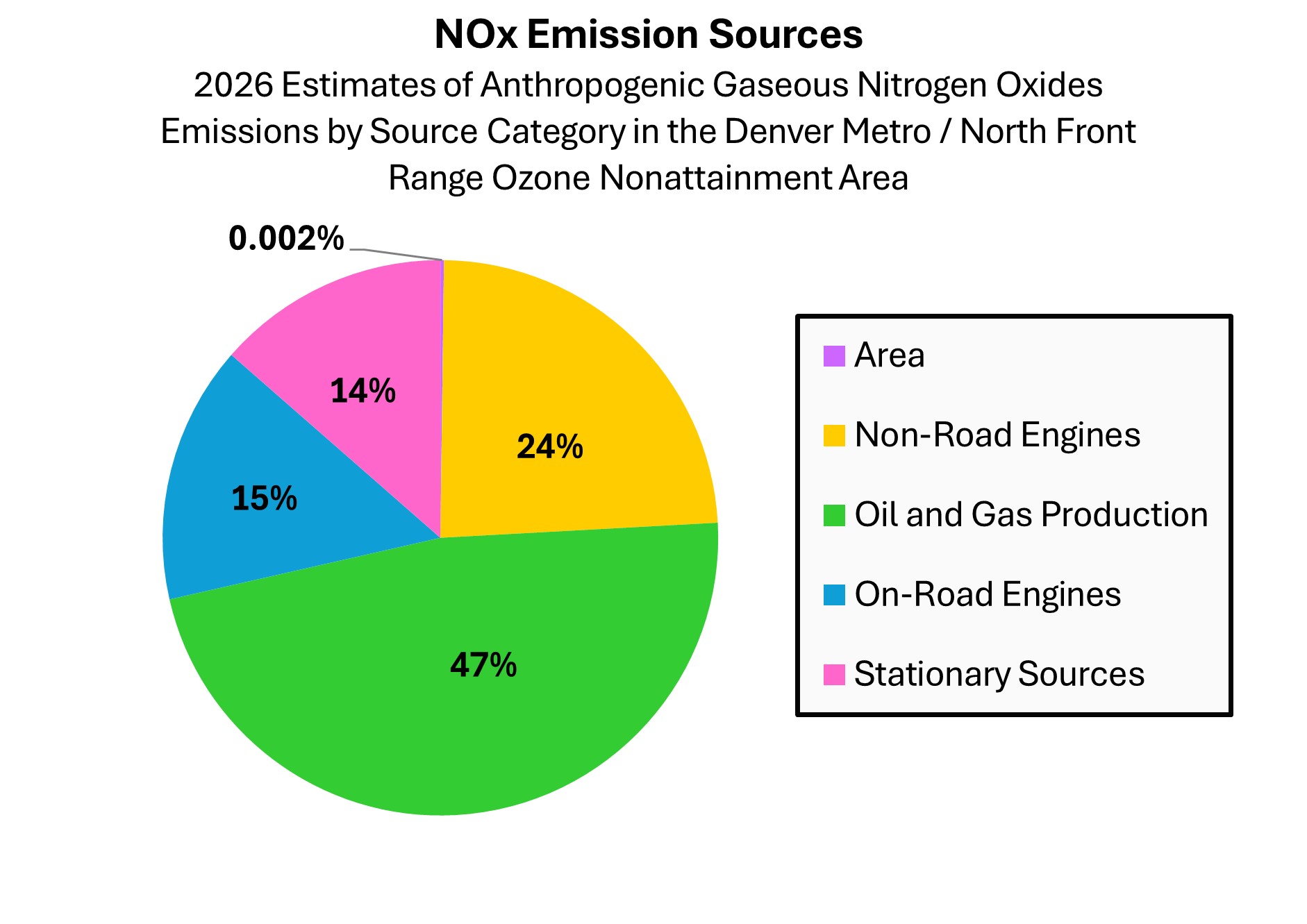
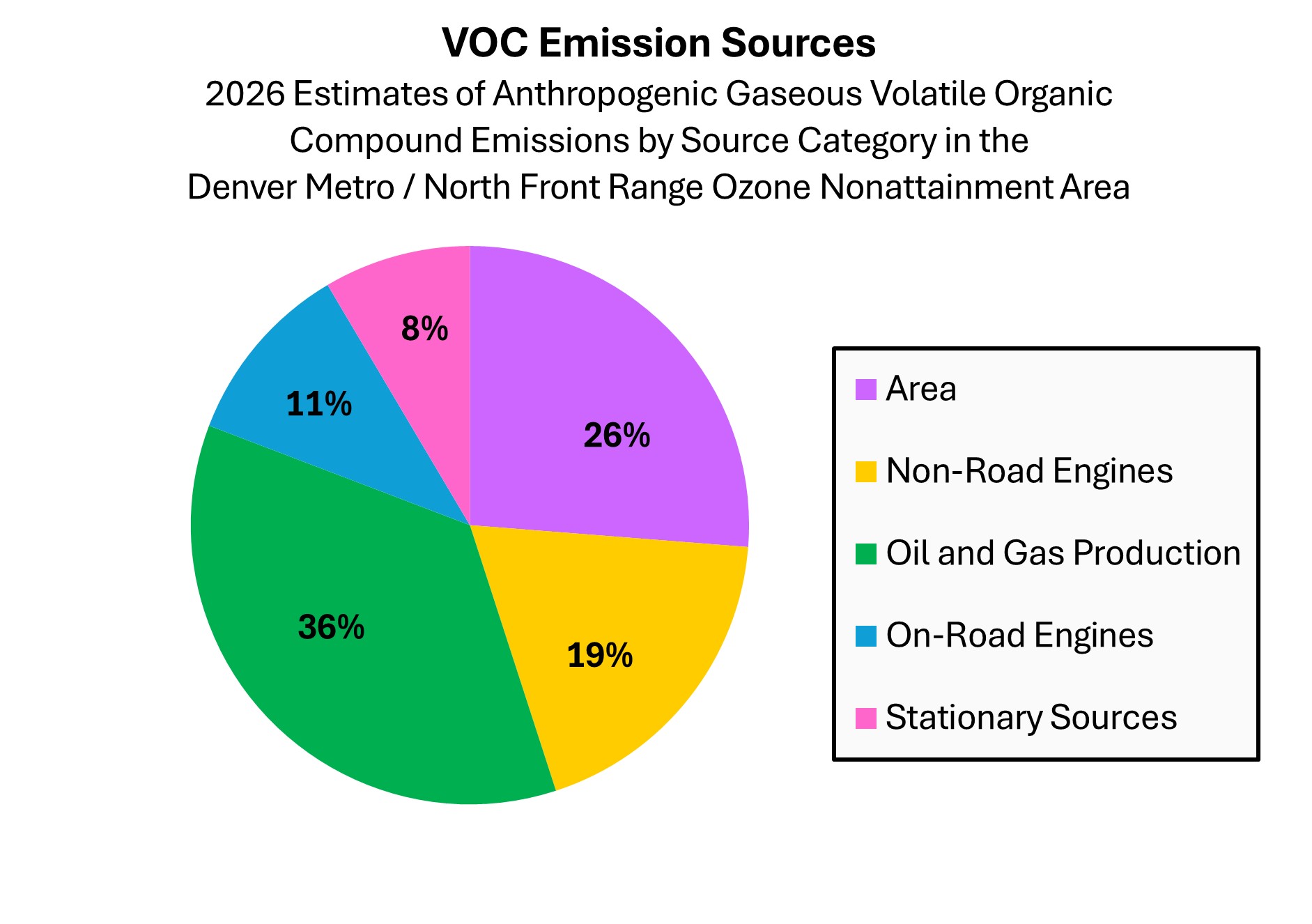
Oil and Gas Production
Nearly one-quarter of man-made ozone pollution in Colorado’s Front Range nonattainment region is caused by the oil & gas industry. This includes emissions from operations, storage facilities, drilling, trucking, and engine exhaust.
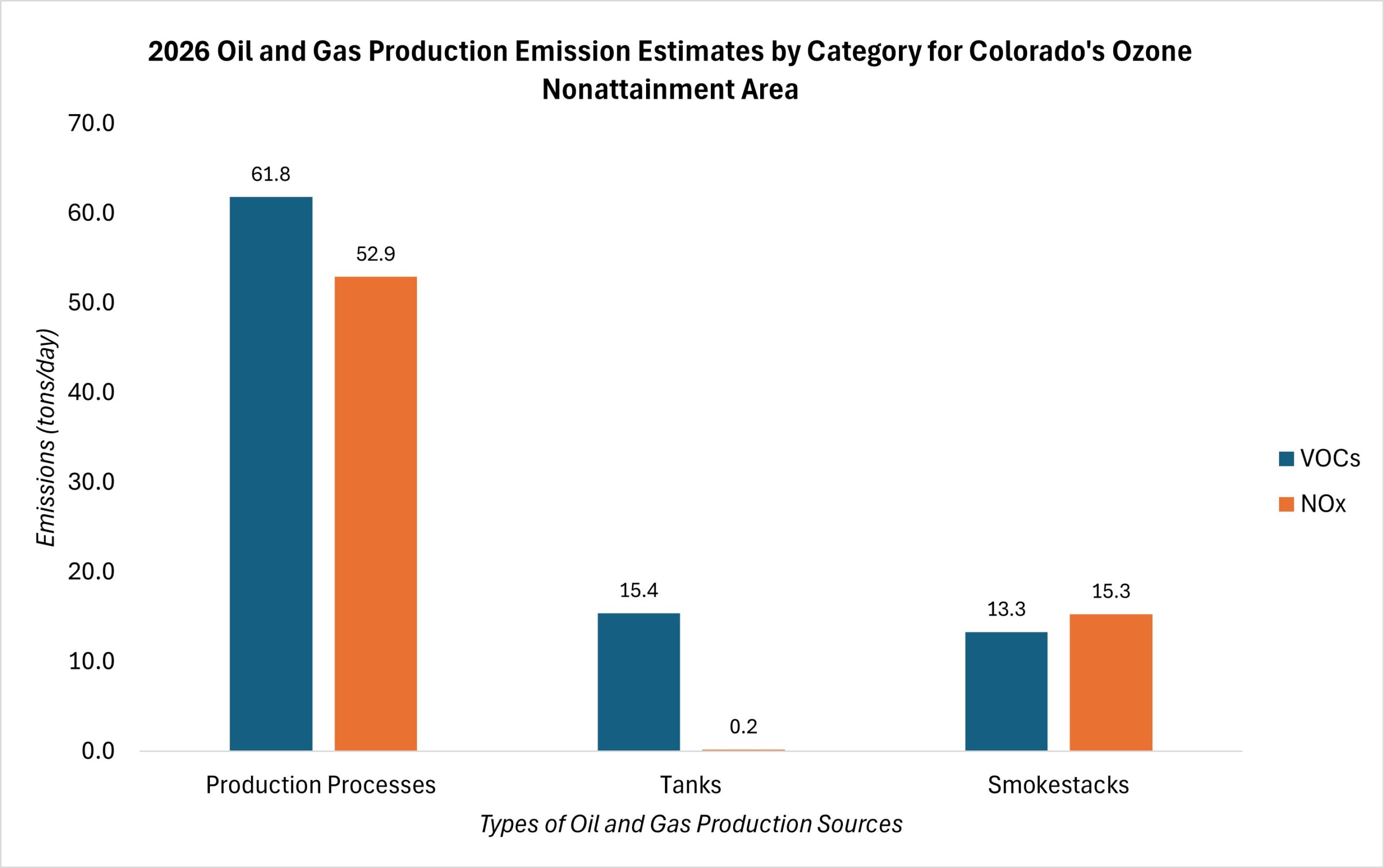
Mobile Sources (on-road and non-road)
Mobile Sources are classified as on-road and non-road vehicle sources. On-road sources include vehicles traveling on roads to transport passengers or freight. Non-road sources include gas and diesel powered vehicles, engines and other equipment used for aircraft, construction, agriculture, recreation, and more. Lawnmowers, leaf blowers, weed wackers, and other equipment used to maintain lawns and gardens are a significant source of non-road mobile emissions.
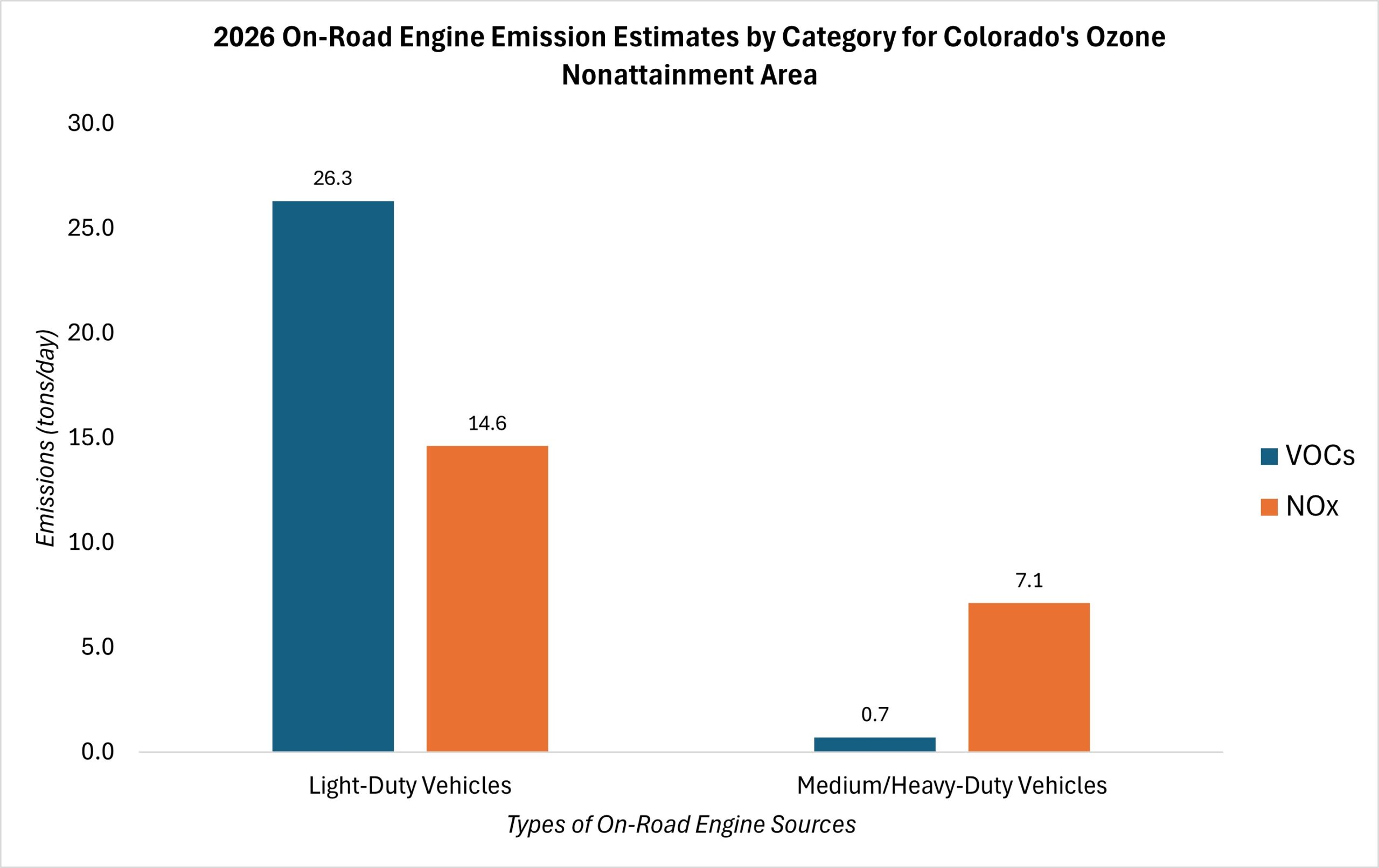
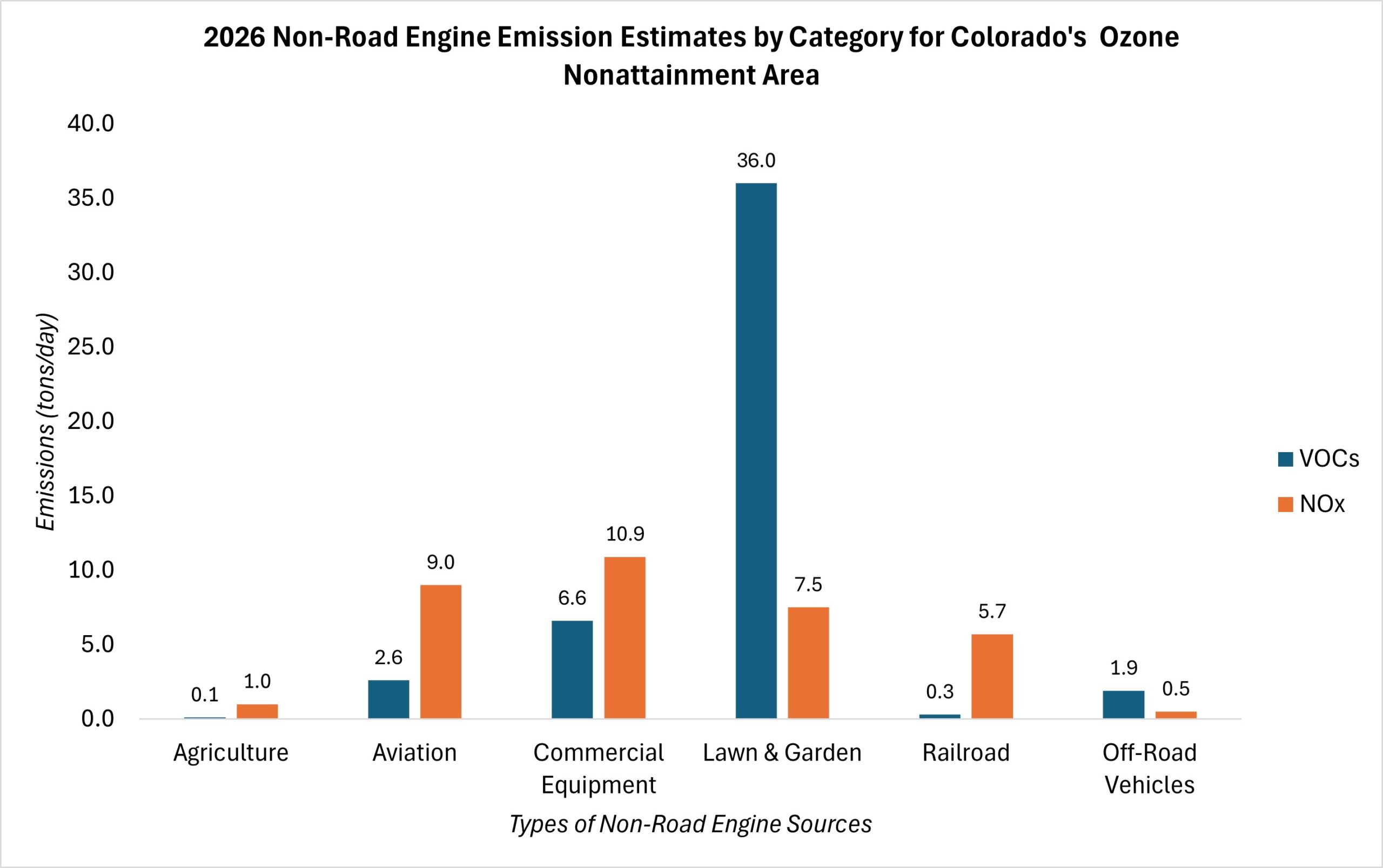
Area Sources
Area sources are smaller emissions sources that collectively account for a significant portion of air pollution. These include producers such as certain types of trees, home and personal care products, after-market auto care products, paints and solvents, residential and commercial heating, and breweries and other small production businesses, among others.
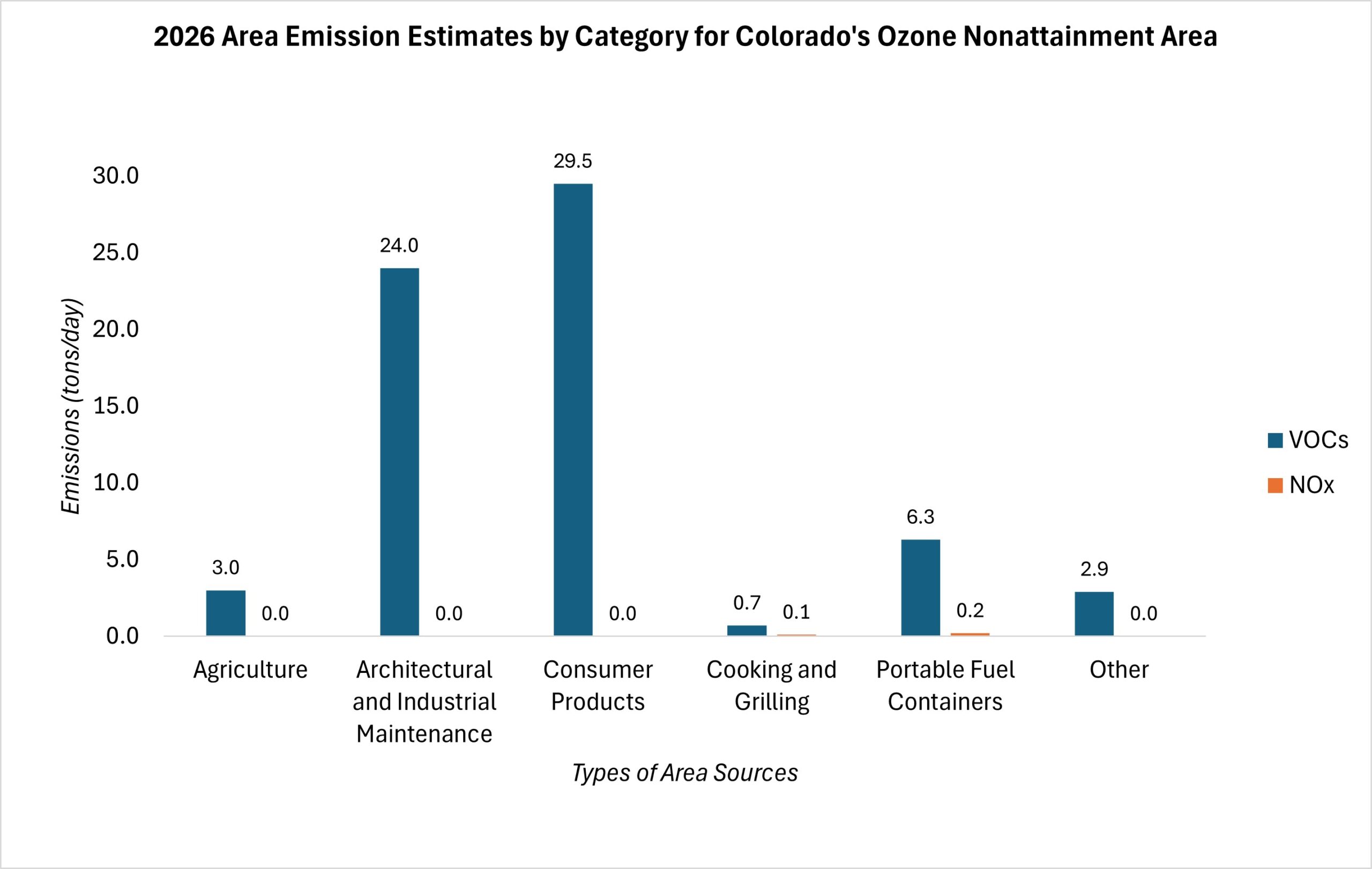
Stationary Sources
Stationary sources are fixed-site producers of pollution such as power plants, chemical plants, oil refineries, manufacturing facilities, small industrial processes, and other industrial operations. Large sources that have specific locations and release pollutants in quantities above a certain threshold are known as point sources. The State of Colorado requires that the producers of these sources file an Air Pollution Emission Notice (APEN) with the Colorado Department of Public Health and Environment, which maintains a Stationary Source Emissions Inventory.
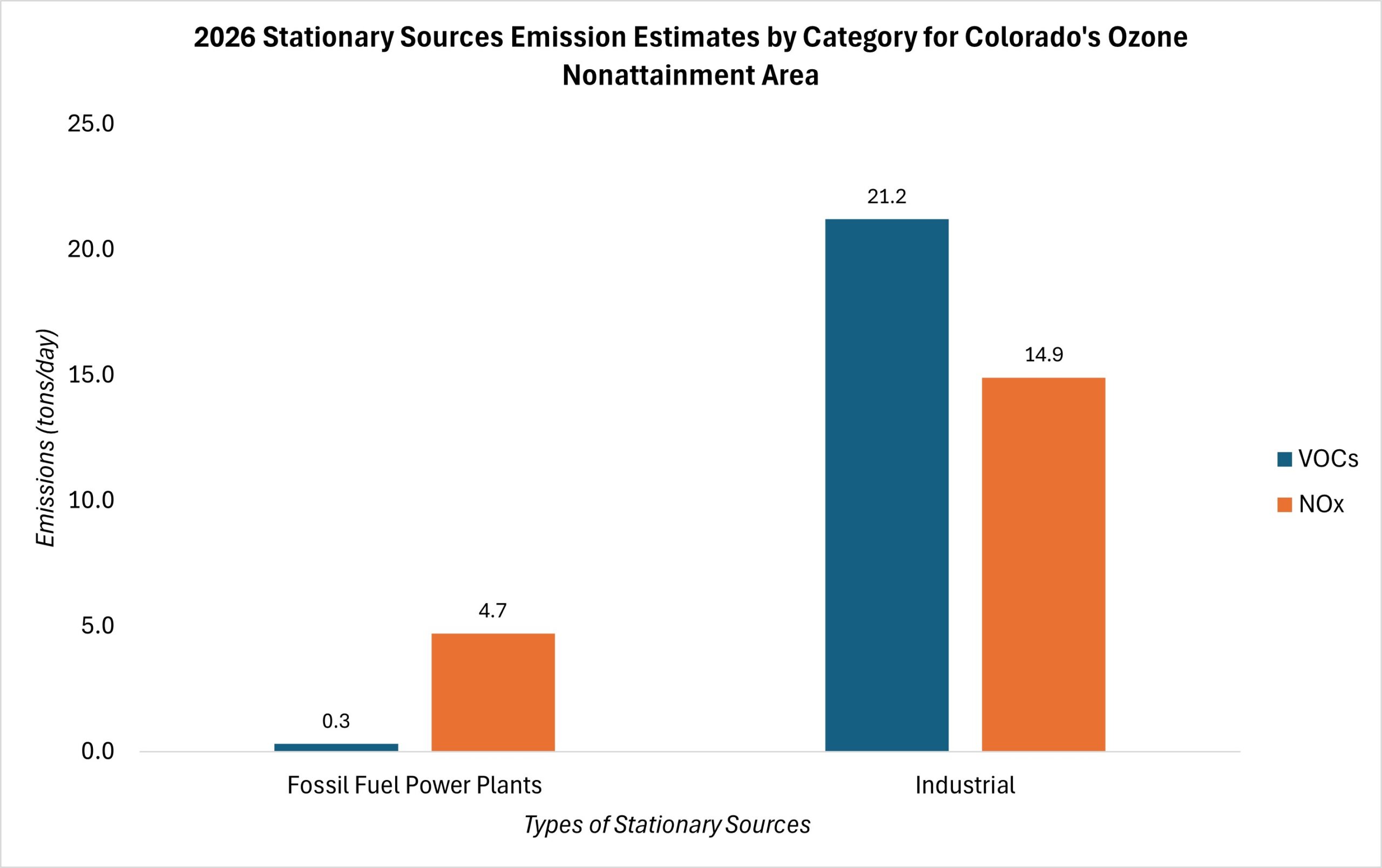
Background and Natural
More than half of the region’s ozone pollution is background and natural. This includes ozone from local fires and biogenic, or plant-based, emissions.
FAQ #3: How does the RAQC help local governments fight air pollution?
The RAQC provides a service to all of the communities in the Denver Metro Region/North Front Range by stakeholdering with the state, local governments, community groups, industries and residents in order to create Colorado’s State Implementation Plan to reduce ozone pollution and attain federal ozone standards. The State Implementation Plan must be submitted to the EPA regularly.
For communities in the ozone nonattainment region, the RAQC’s Simple Steps, Better Air program advertises to residents about what individual actions can reduce ozone pollution.
Different RAQC programs provide grants for local governments, small businesses, and individuals to replace gas and diesel powered equipment with electric alternatives. View our programs to see what is available in your community.
And finally, these local government resources will be continuously updated and maintained to provide strategies, grant opportunities, and resources for communities in the Front Range. If you are a local government staffer or elected official, reach out to RAQC staff if you are interested in creating unique solutions to reduce air pollution in your community.

